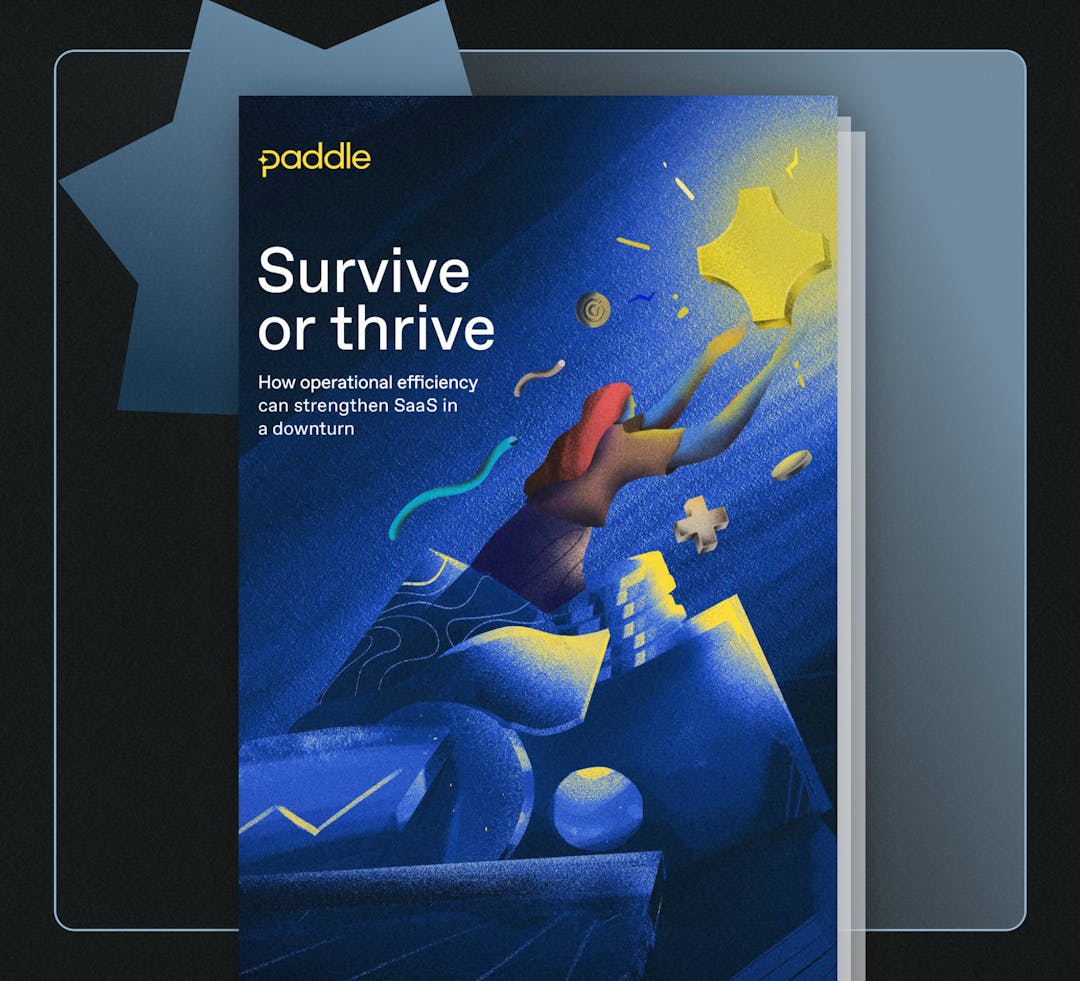As we head towards the end of a turbulent year for the SaaS industry, Execs are looking to the year ahead and asking themselves:
What do we need to achieve in the next 12 months and (crucially) how will we get there?
Whether you’re sitting in a boardroom with strong coffee or hashing it out over Zoom, setting the right goals now is crucial for hitting the ground running come January.
When it comes to SaaS goals, there are a number of frameworks to choose from and a whole lot of jargon to get your head around. So, don’t worry if you’re not sure of the difference between OKRs, KRAs, and BHAGs because 1) you’re not the only one and 2) we’re about to unpack six popular goal-setting frameworks for SaaS to help you set your business up for success in 2023.
Setting SaaS goals
Effective goals will help you make decisions about your business’ strategy, and not to mention provide alignment across your teams, making sure everyone understands the role they play in the business’ success.
Of course, there are a bunch of ways to set goals, so how about we take a look at some popular frameworks and how they work in practice? Here’s six:
1) Key performance indicators (KPIs)
KPIs are quantifiable measures of your business’ performance. That is, the metrics you use to measure success in different areas of business - like, revenue growth or customer retention, for example - or to measure progress against business objectives (your mission).
In SaaS, there are a number of key metrics to choose from but common business-level KPIs include:
Why use KPIs?
KPIs are a popular choice for SaaS companies of all sizes because they help you prioritize and make decisions based on performance data.
KPIs can also be used at a strategic, company level and then again at department or team level - and even further down to individual accountability against certain metrics.
For example, a marketing team might be tasked with lead generation or pipeline goals, a sales team with SaaS bookings or closed deals, and a customer success team with customer activation or renewal rate goals. All of which ultimately feed into a business’ monthly or annual recurring revenue targets.
Disadvantages of KPIs
The thing to remember is that these are KEY performance indicators and so you shouldn’t be tracking more than 10 at a time .
Another potential problem with KPIs is that they only tell you part of the story - whether you’re achieving your goal or not. Whatever the data tells you, requires a bit more digging into the cause of what’s going on. For example, if you spot MRR is down in Q1, you need to figure out why. Is it existing customers churning or are they downgrading their subscriptions? See an issue, find the issue, fix the issue - but of course, this takes time and resources.
KPIs aren’t always used in isolation. As you’ll see throughout the rest of this article, KPIs play a part in some other frameworks too.
2) S.M.A.R.T goals
S.M.A.R.T is a framework designed to help you make your goals more effective. S.M.A.R.T goals are:
- Specific: Your goals should be focused so your team understands the actions that will help you achieve it. Using an example, it’s the difference between a goal that is to “grow your business” and a goal that is to “grow revenue from new customers by 20%”
- Measurable: How you will measure success. This could be one of the SaaS metrics mentioned above - we told you KPIs would be a running theme. Taking the example above, this could be to “grow new MRR by 20%”
- Attainable: Your goals should be achievable. While stretch goals give you something to shoot for there’s a fine line and setting something completely unrealistic isn’t helpful for your business in the long run or for team motivation
- Relevant: Your goal needs to be based on something you can control, and something that (when you achieve it) will take your business a step closer to achieving your mission. Using the same example, the business setting this goal could control this figure by optimizing its customer acquisition strategy .
- Timely: Set a time goal for when this goal will be achieved. An overarching goal could be more long-term, say in a year’s time. So, to complete the example - it would look a little something like this: Grow new MRR by 20% in H1 2023
Why use S.M.A.R.T goals?
You can roll down S.M.A.R.T goals into smaller milestones to help you achieve the business’ goal too. Let’s look at how you can split the goal of the company growing new MRR by 20% in H1 down:
- Marketing: an ambitious target to bring more people to the website.
- Product: a conversion target to boost numbers completing the checkout.
- Support: consistently meeting their SLAs to make sure customers get up and running more quickly.
Disadvantages of S.M.A.R.T goals
While designed to create focus and boost efficiency in the process, the targeted nature of S.M.A.R.T goals means they can easily bounce too narrow.
If this happens, you risk missing out on a huge chunk of what you actually want to achieve. This can cause two things to happen:
- Your team neglects other tasks because they aren’t part of a tracked, measurable goal.
- Your goals actually become unachievable because, in reality, there is too much else to do to dedicate enough time to it.
That high-level mission is important though, as S.M.A.R.T goals are also (relatively) short-term by design. Having an overarching or long-term goal or mission can help the team stay motivated and help prevent frustration if there are blockers.
3) Objectives and Key Results (OKRs)
OKRs have gone through many iterations by iconic business leaders - perhaps most notably by Google Co-Founder Larry Page - who now credits the framework for the company’s rapid growth .
The basic model of OKRs is both:
- A motivational or challenging objective
- Three to five key results or measurable steps to achieving it
So it ends up looking a little something like this: I will [Objective] as measured by [Key Results].
One thing that sets OKRs apart from some of the other frameworks is that objectives are not set to be achievable in a specific time frame. In fact, if you achieve your objective at 100% they are considered too easy – instead, around 70% is considered good.
Why use OKRs?
OKRs are very commonly used in SaaS businesses. It gathered momentum due to proven success and recommendation by the likes of Google as mentioned above but has also provided smaller companies with actionable steps to help them reach growth milestones.
As such, the model works well for both startups and scale-ups who need goals that empower them to get stuff done.
This is where key results come in as they act as the milestones towards your objective - often reported in a red, amber, green (RAG) status along the way. Given the often long-term, high-level objective, these “KRs” give the team something more tangible to aim for. You can also roll them down from a company level so that everyone understands how their team and role will contribute.
Disadvantages of OKRs
That being said, you don’t want to fall into the trap of setting too many OKRs and giving your team way too much to do. Guidance says that you should set no more than 2-4 objectives at a time, with 3-5 key results for each.
4) Big Hairy Audacious Goals (BHAG)
Yep, you read that right. Big Hairy Audacious Goals or BHAGs are designed to give your entire company an intriguing and compelling goal to aim for.
Simply put, a BHAG is a long-term goal, designed to inspire and energize employees – similar to a company’s vision or mission. First introduced in a book titled Built to Last: Successful Habits of Visionary Companies , these goals usually fall within one of four main categories:
- Role model: Aiming to achieve the same level of success as a company in another industry. This should be a standout company, for example, aiming to be the “Salesforce” or “Amazon” of your industry.
- Common enemy: Focusing on how you will win against competitors and leaders in your industry.
- Targeting: As it sounds, targeting involves setting a clear end goal, be it a revenue target, valuation goal, or exit date.
- Internal transformation: Focusing on internal goals, be it hiring, processes or product.
Why use the BHAG framework?
They’re popular because they convey a long-term aim, something that people can strive to achieve - and the promise of a journey you want to be on.
Disadvantages of BHAG
BHAGs, while inspiring for some, can leave others missing the “how” that tells them the part they play in achieving it. Having a more visionary goal can also make it hard to measure and stay on track of along the way.
For this reason, you might want to use BHAGs alongside another framework that will give you some smaller, measurable milestones to reach on the way.
5) Management by Objectives (MBO)
MBO is a process where the goals of an organization are defined and conveyed to the rest of the company by management. The idea is then to roll these down and bring individual, employee objectives in line with your high-level company goals.
Once business and individual goals are defined, management will then work with employees to monitor and evaluate performance and processes against these objectives.
Why use MBO?
It’s something that is used by businesses of all sizes, including notable names like Hewlett Packard, Xerox, and Intel.
The idea is that by aligning employee objectives to company objectives, you motivate employees and ensure alignment across the company, as well as encouraging better communication between management and their reports.
Disadvantages of MBO
Businesses using MBO need to make sure that any objectives set are focused enough and include some measurable outcomes. This could be done, for example, by using the S.M.A.R.T framework to define employee objectives.
MBOs also work best when employees are involved in determining their personal objectives. So take care to make sure that objectives are collaborative, rather than just communicated by leadership.
You also need to make sure your managers are trained in and maintain a focus on the qualitative progression of employees when reviewing performance. The risk is that everything is otherwise resting on the completion of the set goals, which also creates a lot of work to provide daily feedback and constant progress updates.
6) 4 Disciplines of Execution (4DX)
Despite spending a huge amount of time and resources developing goals and strategies, the vast majority (80%) of businesses fail to achieve them . The '4 disciplines of business execution' framework was designed to close this execution gap by helping businesses create a culture of high performance.
The 4 disciplines outlined in the framework are:
- Focus on the wildly important: The emphasis here is focusing on what you must achieve, rather than everything you need to do.
- Act on the lead measures: Based on the principle that 80% of results come from 20% of activity make sure you focus on the right things - that is, those that can create the highest impact.
- Keep a compelling scoreboard: You need your employees to be engaged and motivated. Track success, keep score, and celebrate wins.
- Create a cadence of accountability: Yes, share in the wins but also analyze failures and iterate your approach as you go.
Why use the 4DX framework?
To prevent this from being another well-intentioned goal-setting exercise and keep you on track, the framework includes clear guidance to make sure your goals set clear expectations and are realistic and motivating across the team.
Disadvantages of the 4DX framework?
The focus on accountability and scoring is another potential pitfall. Remember, the focus is on building a culture of execution and productivity - so make sure your processes reflect this and don’t actually create a culture of fear and blame when things go wrong.
Read more about the 4DX framework here.
Now you've thought about goal-setting framework - it's time to actually set your goals. For this, it's important to make sure you've got a stellar go-to-market (GTM) strategy to keep you focused. Check out this guide to build a robust GTM strategy for your business (including a template that you can use).




